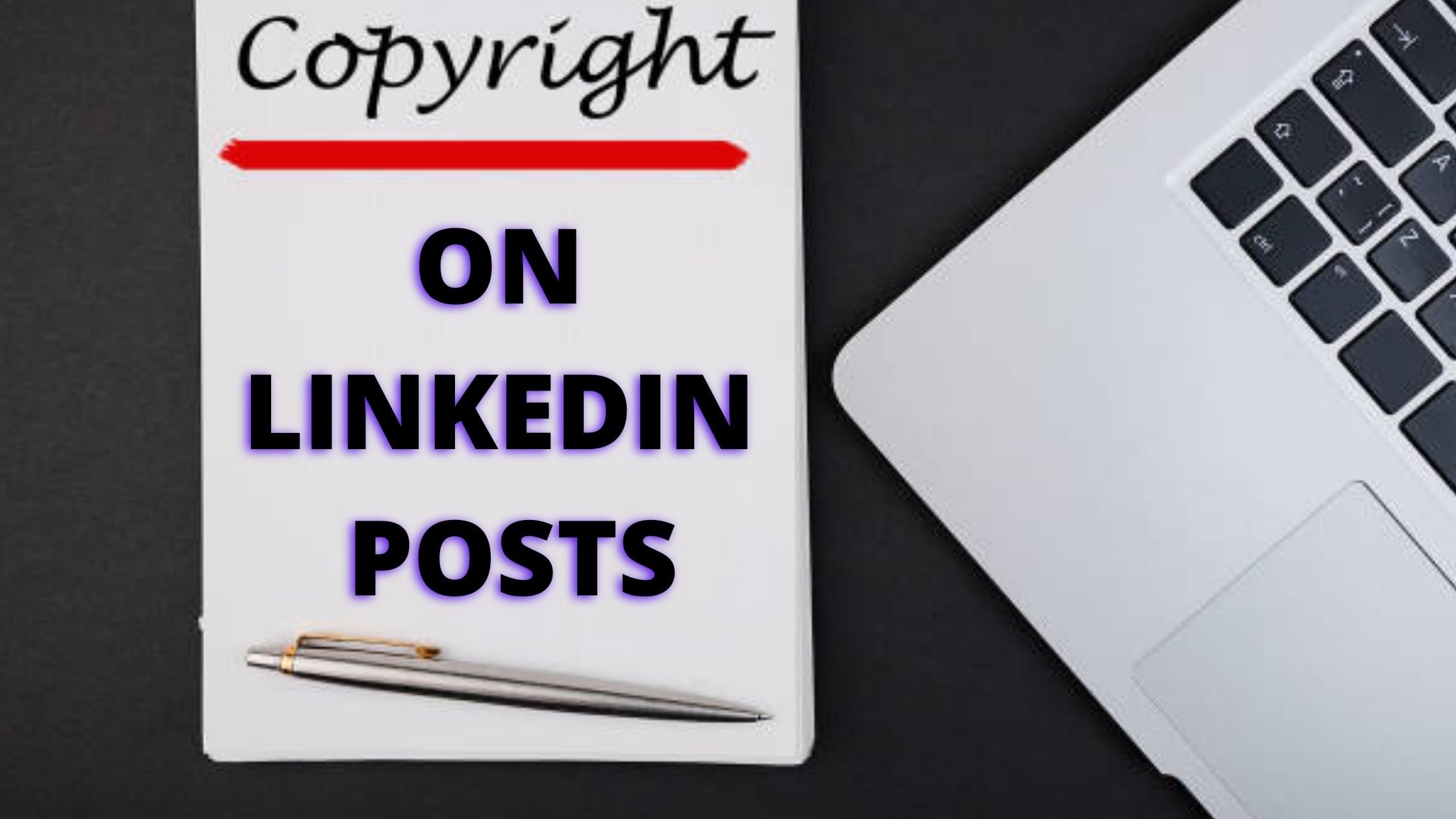COPYRIGHT OF POSTS ON LINKED IN
On the Internet, LinkedIn is one of the world's largest professional network. To find the right work or internship, communicate and strengthen professional relationships, and learn the abilities you need to excel in your career, you can use LinkedIn. LinkedIn can be reached from a laptop, a smartphone app for LinkedIn, a mobile web experience, or from a mobile app for LinkedIn Lite Android. By highlighting your unique professional story through experience, expertise, and a full LinkedIn profile, you will interact with opportunities. It can also be used To arrange offline activities, join groups, write posts, upload photos and videos. Therefore it is imperative that LinkedIn has a copyright policy. According to its policy, LinkedIn respects others' rights and aims to provide a forum that does not include any content that violates those rights.

COPYRIGHT OF POSTS ON LINKED IN
On the Internet, LinkedIn is one of the world's largest professional network. To find the right work or internship, communicate and strengthen professional relationships, and learn the abilities you need to excel in your career, you can use LinkedIn. LinkedIn can be reached from a laptop, a smartphone app for LinkedIn, a mobile web experience, or from a mobile app for LinkedIn Lite Android.
By highlighting your unique professional story through experience, expertise, and a full LinkedIn profile, you will interact with opportunities. It can also be used To arrange offline activities, join groups, write posts, upload photos and videos.
Therefore it is imperative that LinkedIn has a copyright policy. According to its policy, LinkedIn respects others' rights and aims to provide a forum that does not include any content that violates those rights. The User Agreement demands that members 'posted information be correct, legal and not in violation of others' rights. LinkedIn offers a process for the submission of statements or notices concerning material shared to the members in order to promote these goals. However, attempting to address the complaints of users directly with the member who posted the content by sending him or her a message is always much easier and quicker.
Whether or not LinkedIn may, in response to a notice, disable access to or delete content, they may attempt in good faith to forward the written notice, including the contact information of the claimant, to the member who posted the content and/or take other reasonable steps to notify the member that LinkedIn has received notice of an alleged infringement of intellectual property rights or of an alleged infringement of intellectual property rights. It is also a policy to disable and/or terminate, in appropriate circumstances and at their discretion, the accounts of members or groups which, as the case may be, infringe or repeatedly infringe the rights of others or otherwise post unlawful material.
It is also important to note that any notice or counter-notice sent by a member must be valid and must be submitted with a perjury penalty. Personal liability can arise from a false notice or counter-notice. Before delivering a notice or a counter-notice, it is therefore best to seek the advice of legal counsel. Procedures for receiving written notice of alleged copyright infringements have been enforced by LinkedIn. An agent has also been appointed by LinkedIn to obtain notices of alleged infringement of copyright. If a member in good faith believe that their copyright has been infringed, they can fill in and request a copyright infringement notice form or give a notice that meets the criteria set out in our Copyright Policy.
The notice of Copyright Infringement shall be in a particular manner. LinkedIn also adopted protocols for obtaining written notice of alleged infringements under the Digital Millennium Copyright Act. An agent has also been appointed by LinkedIn to obtain notices of alleged infringement of copyright. An electronic or physical signature of the person authorized to act on behalf of the owner of the copyright interest; A notice can be given or it can be communicated through written means that shall contain:
-
A list of the copyrighted work that has been breached;
-
A summary detailing the location of the content that is infringing on the website;
-
The email address and the telephone number and/or mailing address;
-
A declaration that they have a good faith belief that the copyright owner, its representative, or the law does not permit the disputed use; and
-
A declaration from the member, made under penalty of perjury, that the information in their notice is correct and that they are the owner of the copyright allowed to act on behalf of proprietor of the copyright.
Then, in compliance with Sections 512(g)(2) and (3) of the Digital Millennium Copyright Act, if a member has reason to believe that a copyright infringement notice has been unfairly submitted against them, they may submit a counter-notice. They can fill out the Copyright Infringement Claim Counter-Notice form, or otherwise provide a written communication which contains:
-
Their electronic or physical signature;
-
Identification of the content withdrawn or access to which has been disabled;
-
A declaration under penalty of perjury that they assume in good conscience that the material was deleted or disabled was a mistake or that the material was misidentified;
-
Their full name, their email address, their mailing address, and a declaration that they agree with the jurisdiction of the Federal District Court (i) in the judicial district where their address is located, if the address is in the United States, or (ii) in the Northern District of California (Santa Clara County), if their address is located outside the United States, and that you will accept service of process from the Complainant submitting the notice or his/her authorised agent.
Therefore it is always advisable to post content that have been made by the member themselves to avoid any kind of violation of law.
BY:-
Raksha Singhal












